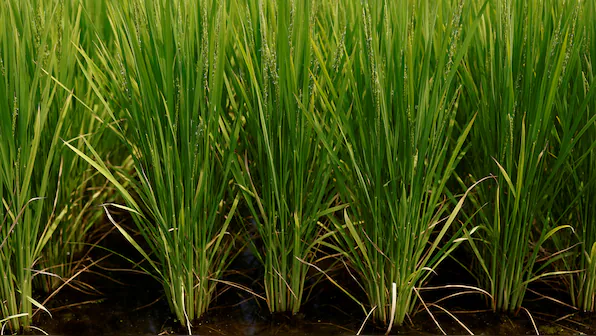Tags
Have hot weather and influx of tourists caused a rice shortage in Japan?
FP Explainers
Japan, which recorded its lowest inventory of rice since 1999 in June, last month witnessed panic buying of its staple. Japan’s officials have blamed hot weather for a decline in harvest last year, while local media have blamed tourists for increasing the demand for rice-based dishes.

Japan is staring at a rice shortage.
A mix of hot weather and an increase in tourists has left the country facing a shortfall of its staple.
“Throughout summer 2024, Japan has been grappling with a table rice shortage resulting in empty supermarket as demand outpaced production for the last three years causing stocks to deplete to their lowest levels in over 20 years,” the US Department of Agriculture wrote in a report last week.
Let’s take a closer look at what happened:
What happened?
The importance of rice in Japanese culture cannot be underestimated.
Rice’s harvesting has shaped the nation’s landscape – even being used as a currency in the 7th Century.
With an annual consumption of around seven million tons per year, it is by far the most consumed food staple in the country.
August witnessed rice shelves in some stores going bare and stocks rationed after the government warned against panic buying.
“We could only procure half the usual amount of rice this summer and bags of rice get quickly sold out,” a clerk at a branch of the popular Fresco supermarket chain told AFP in the Japanese capital.
Rice shelves in some stores emptied or stocks were rationed after a government warning of a possible “megaquake”, as well as several typhoons and the annual Obon holiday.
Other factors include lower harvests caused by hot weather and water shortages, as well as increased demand related to record numbers of foreign tourists.
CNBC quoted local media as saying that tourists, who have been flocking to Japan, have been increasing the demand for rice-based dishes.
Around 17.8 million tourists came to Japan in the first half of 2024.
In July, 3.3 million visitors entered the country – the most for a single month.
The outlet quoted Oscar Tjakra, senior analyst at global food and agriculture bank Rabobank as saying tourists consumed 51,000 tons of rice from July 2023 through June 2024.

That number was at just 19,000 tons from July 2022 to June 2023.
At one food store in Tokyo, a sign seen by AFP read: “In order for many customers to be able to buy, we ask you to purchase one (bag of rice) a day per family.”
A worker at another store in Tokyo said: “We can’t purchase any rice at all, and there’s no prospect of buying anytime soon”.
The Fresco worker told AFP that daily stocks ran out by midday.
“Customers queue up before the store opens but piles of bags, each of which contains 10 kilograms (22 pounds), are always sold out during the morning,” he said.
CNBC quoted local media as saying rice prices touched $112.67 per 60 kilos in August.
That’s a three per cent increase from July and a five per cent hike since the beginning of 2024.
Japan’s private inventories of rice stood at 1.56 million tons for June, marking the lowest in years, according to data from the Ministry of Agriculture, Forestry and Fisheries
The nation’s stockpile in June was the lowest since 1999 when comparable data was first collected, but officials believe the inventory is sufficient.
“The chief reasons behind the record-low inventory is a decline in production last year due to high temperatures combined with water shortages, and the relative cheapness of rice prices compared to prices of other crops such as wheat,” farm ministry official Hiroshi Itakura told Agence France-Presse.
“The increase in demand by foreign tourists has also contributed,” Itakura added.
Japan last September witnessed its highest temperatures since records began being kept 100 years ago.
A new harvesting season has started with 40 percent of the crop available by the end of September, a farm ministry official told AFP.
Though Japan had an average harvest in 2023, its quality of rice was notably inferior.
As per The Diplomat, just under 60 per cent of the rice was given the highest marks by the authorities.
In 2022, that number was around 76 per cent.
‘Isolated from world market’
Some say Japan’s policies are also an issue.
The country imposes a heavy 778 per cent tariff on rice imports to safeguard its farmers.
“The Japan rice economy remains largely isolated from the world market,” Joseph Glauber, senior research fellow at the International Food Policy Research Institute, told CNBC.
Japan previously witnessed riots over rice in 1993 and 1918, as per The Diplomat.
Others have denied that tourists have played a major role in the shortage of rice.
The Diplomat quoted ex-MAFF official Yamashita Kazuhito as calling them a ‘minor factor.’
Tourists account for, at most, 0.5 percent of Japan’s total annual rice consumption, as per the outlet.
Farm minister Tetsushi Sakamoto appealed for calm.
“Please be cool-headed in your purchase activity by buying only the amount of rice you need,” Sakamoto said, stressing “the supply shortage situation will be gradually resolved.”
Demand has been falling for some time, however, because of a declining population and changing eating habits by many Japanese as they opt for alternatives.
With inputs from agencies
https://www.firstpost.com/explainers/have-hot-weather-and-influx-of-tourists-caused-a-rice-shortage-in-japan-13819072.htmlPublished Date: September 26, 2024






